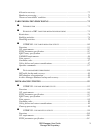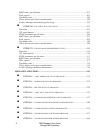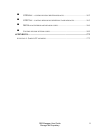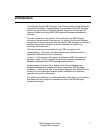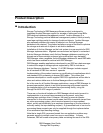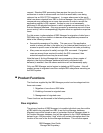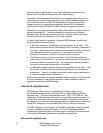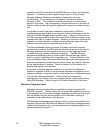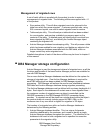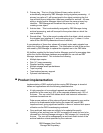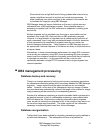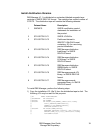12 DB2 Manager User Guide
StorageTek Proprietary
updated row will be stored back in the DB2 table from which it was originally
migrated. All reference to the migrated copy of the row in the Archive
Manager database will have been deleted, causing this row to be
unreferenced. This will effectively “re-migrate” the row from Archive
Manager to DB2. The updated row will be stored back in a non-archive
partition of the table - the corresponding 18-byte archive stub in the archive
partition will be deleted allowing this space to be re-used for another archive
stub.
A migrated row which has been updated and stored back in DB2 will
subsequently become eligible for re-migration to Archive Manager under the
control of the DB2 Manager batch migration utility. Selection of that row via
the SQL command used to control row migration for a table will cause it to be
migrated from DB2 to Archive Manager – however, it should be noted that the
migrated row will be stored in a different Archive Manager object from that
used for storing the previous migrated copy of the row.
The Archive Manager object containing a migrated row which has been
updated and restored in the DB2 table will continue to remain in the Archive
Manager database until all migrated rows stored in that object have been
invalidated through update or deletion processing. The DB2 Manager
database housekeeping utility is used to delete Archive Manager objects
which no longer contain any active migrated rows. Following deletion of the
Archive Manager object, the base Archive Manager object management and
database maintenance utilities may be used to reclaim tape space occupied
by the deleted object, if required. Refer to chapter 6 of this manual for a
detailed description of this process.
It should be noted that frequent updating of a row after it first becomes
eligible for migration is likely to cause multiple instances of migration and re-
migration activities, which may result in a high proportion of invalidated space
in the Archive Manager database. Tables which are accessed by
applications in this manner may not be appropriate for migration processing
using DB2 Manager. Refer to page 14 for further discussion of this issue.
Deletion of migrated rows
Migrated rows may be deleted by an application program using an SQL
DELETE command. Deletion of the row will cause the migrated copy of row
to be retrieved from the Archive Manager database, and the archive stub will
then be deleted from the archive partition of the DB2 table, causing all
reference to the migrated row to be removed.
DB2 Manager housekeeping processing is used to synchronize deletion of a
migrated row from the DB2 table with deletion of the Archive Manager object
containing the migrated row, in an identical manner to that described for row
update processing on page 11.



